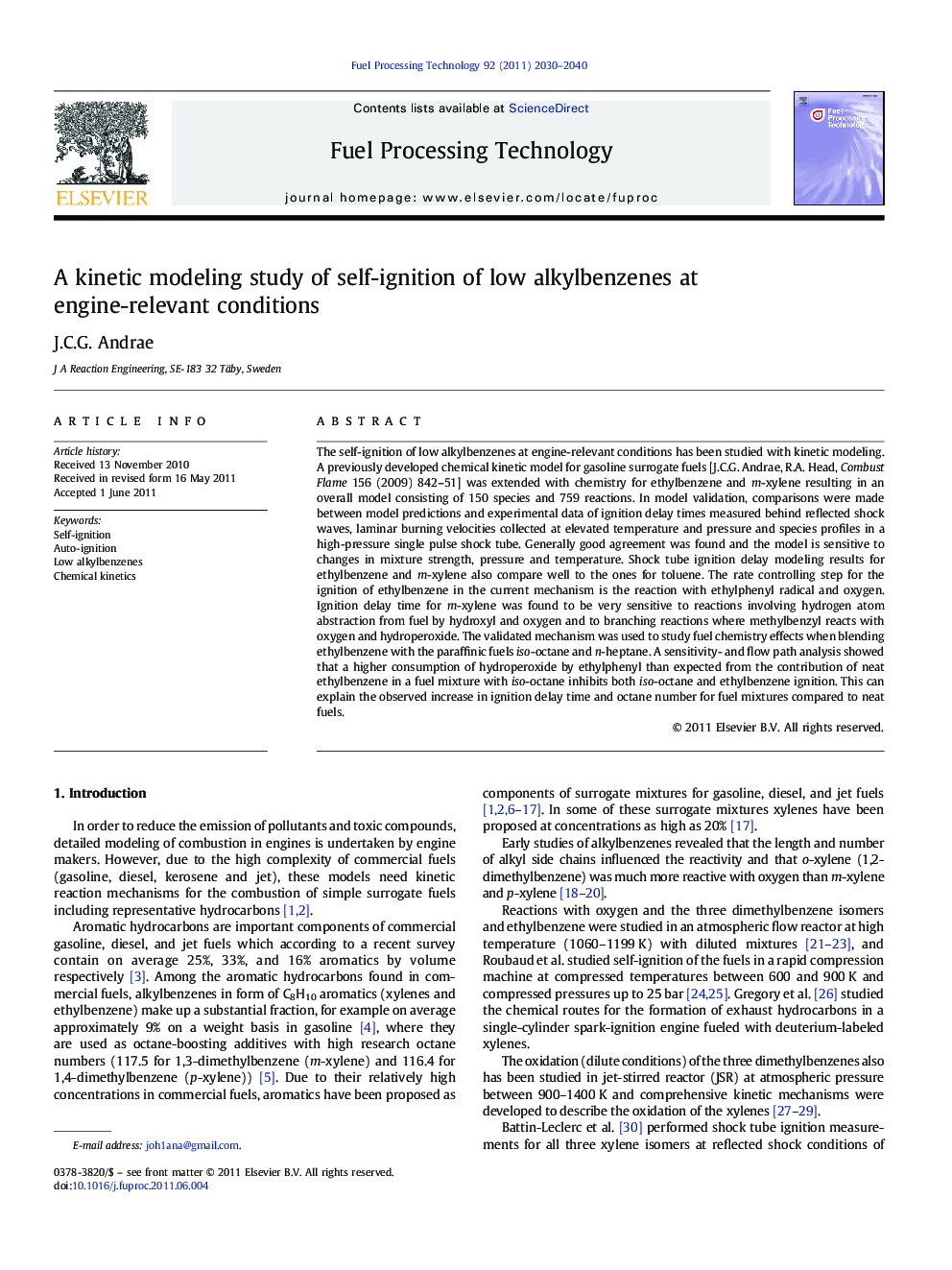| کد مقاله | کد نشریه | سال انتشار | مقاله انگلیسی | نسخه تمام متن |
|---|---|---|---|---|
| 210588 | 461717 | 2011 | 11 صفحه PDF | دانلود رایگان |

The self-ignition of low alkylbenzenes at engine-relevant conditions has been studied with kinetic modeling. A previously developed chemical kinetic model for gasoline surrogate fuels [J.C.G. Andrae, R.A. Head, Combust Flame 156 (2009) 842–51] was extended with chemistry for ethylbenzene and m-xylene resulting in an overall model consisting of 150 species and 759 reactions. In model validation, comparisons were made between model predictions and experimental data of ignition delay times measured behind reflected shock waves, laminar burning velocities collected at elevated temperature and pressure and species profiles in a high-pressure single pulse shock tube. Generally good agreement was found and the model is sensitive to changes in mixture strength, pressure and temperature. Shock tube ignition delay modeling results for ethylbenzene and m-xylene also compare well to the ones for toluene. The rate controlling step for the ignition of ethylbenzene in the current mechanism is the reaction with ethylphenyl radical and oxygen. Ignition delay time for m-xylene was found to be very sensitive to reactions involving hydrogen atom abstraction from fuel by hydroxyl and oxygen and to branching reactions where methylbenzyl reacts with oxygen and hydroperoxide. The validated mechanism was used to study fuel chemistry effects when blending ethylbenzene with the paraffinic fuels iso-octane and n-heptane. A sensitivity- and flow path analysis showed that a higher consumption of hydroperoxide by ethylphenyl than expected from the contribution of neat ethylbenzene in a fuel mixture with iso-octane inhibits both iso-octane and ethylbenzene ignition. This can explain the observed increase in ignition delay time and octane number for fuel mixtures compared to neat fuels.
Research highlights
► Chemical kinetic model for low alkylbenzenes developed.
► Mixtures of aromatic and paraffinic fuels may be modeled.
► Mixing behavior of fuel blends is interpreted by kinetic modeling.
► Semi-detailed model computationally tractable for engine simulations.
Journal: Fuel Processing Technology - Volume 92, Issue 10, October 2011, Pages 2030–2040